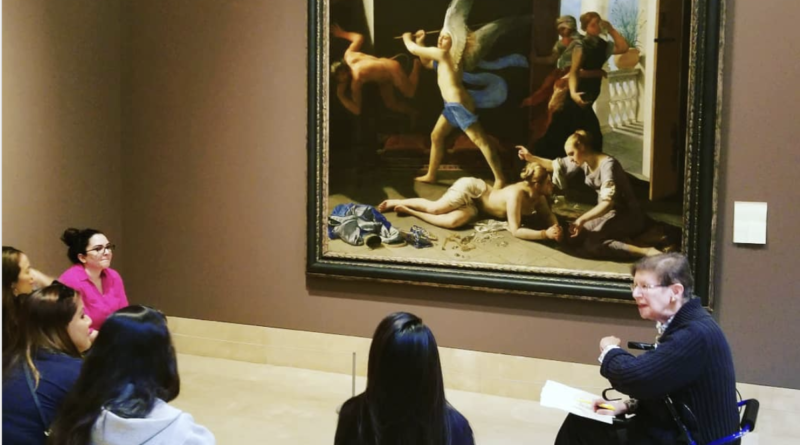Webinar: Looking Is Not Seeing: Using Art to Improve Observational Skills
Taking a trip to the museum is not only fun, it can also help deepen your observational skills. In a webinar hosted by LA Best Babies Network on November 17, 2022, Associate Professor of Nursing and Certified Nurse-Midwife Sarah Shealy and a team of faculty members from Mount Saint Mary’s University – led a Looking Is Not Seeing session. Conducted for staff in our network of home visiting organizations and Welcome Baby hospitals, Professor Shealy and her team used art images from LACMA (like this one), and patient images of a hospital postpartum room. (At the presenter’s request, we did not record this webinar.)
What Is “Looking Is Not Seeing”?
Looking Is Not Seeing, a collaboration between Yale art educator Linda Friedlaender and Yale Nursing Professor Linda Honan, was first developed in 2008. Looking Is Not Seeing aims to help participants distinguish between — and be mindful of — subjective versus objective observations. It has been replicated in nursing and medical schools around the world.
With a grant from Robert Wood Johnson in 2014, the Yale team traveled to Los Angeles to teach the technique to the MSMU team. Since that time, Professor Shealy has worked with LACMA and The Norton Simon Museum to offer Looking Is Not Seeing to Mount St. Mary’s University nursing students.
A 2008 study, 2012 study, and a replication study in 2016 with the MSMU ABSN students, found that Looking Is Not Seeing helped nursing students be more discerning and pick up on more details about their patients. It also helped them guard against the natural tendency to jump to conclusions. Specifically, the study found that: “Participants visiting the museum subsequently wrote more about what they saw, resulting in significantly more objective clinical findings when viewing patient photographs. In addition, participants demonstrated significantly more fluidity in their differential diagnosis by offering more alternative diagnoses than did the control group.”
Looking Is Not Seeing is designed to help the participant:
- Recognize our tendency to jump to conclusions
- Practice progressive gathering of data
- Discern differences between subjective and objective data
- Describe strategies for enhanced observation
Why Is This Important?
Keen visual observation is a critical skill for anyone who provides health care or social support. It’s especially important in home visiting services, which seek to highlight a family’s strengths and to tailor support for their unique needs — all while remaining nonjudgmental and “meeting clients where they are.”
Resources:
- From contemporary art to core clinical skills: observation, interpretation, and meaning-making in a complex environment (NIH, 2011)
- Looking is Not Seeing and Listening is Not Hearing: a Replication Study with Accelerated BSN Students (Journal of Professional Nursing, 2016)
- Art Museum and Medical School Partnerships (University of Texas at Dallas, 2019)
- One Thousand Words: Evaluating an Interdisciplinary Art Education Program (Journal of Nursing Education, 2015)
- Frame of Mind podcast: Art and Medicine episode (The MET, 2022)

